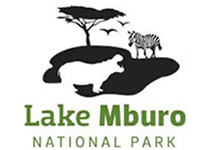If you would like to explore the lake, take the road leading south out of Rwonyo Rest Camp which is the Lakeside Track. This route brings you alongside the swamp almost immediately and down to the lake edge after a kilometre. Here you can rent a boat and go out on the lake. The fish-landing site here is haunted by marabou storks which scavenge fish offal.
A boat is available from the Park Office at Rwonyo. Please check with the Warden in charge to seee if it is available and to arrange payment. Private boats can be used, but these should be rowboats or sailboats – no out-board motors as these interfere with fishing activities and also disturb the wildlife.
The northern, western and southern areas are fringed with dense stands of the giant sedge cyperus papyrus. This seemingly monotonous habitat in fact harbours an amazing number of bird species, and there are in fact six birds here that live only in such swamps – the so-called “papyrus endemics”. The papyrus gonolek is one such bird. It has a yellow nape and crown, black wings and red breast, and long toes to allow it to grip the thick papyrus stalks. However, you are more likely to hear its mellow plaintive calls than to see it.
In addition to the permanent swamps fringing the lakes, there are many temporary pools and seasonally flooded swamps in the park. These attract many of the birds found around the lake, but some birds perfer to feed in the seasonal swamps and flooded grasslands which are shallower and often contain abundant frogs and insects.
Pairs of saddle-billed stork are sometimes seen in the Africa. Although widely distributed, they need large territories in which to feed and breed and their wetland habitats are shrinking elsewhere due to drainage for agriculture. This huge black and white bird has a large red and black bill with a yellow “saddle” across its base. Males and females can be distinguished by their eyes – those of the females are yellow, while those of the male are brown.
